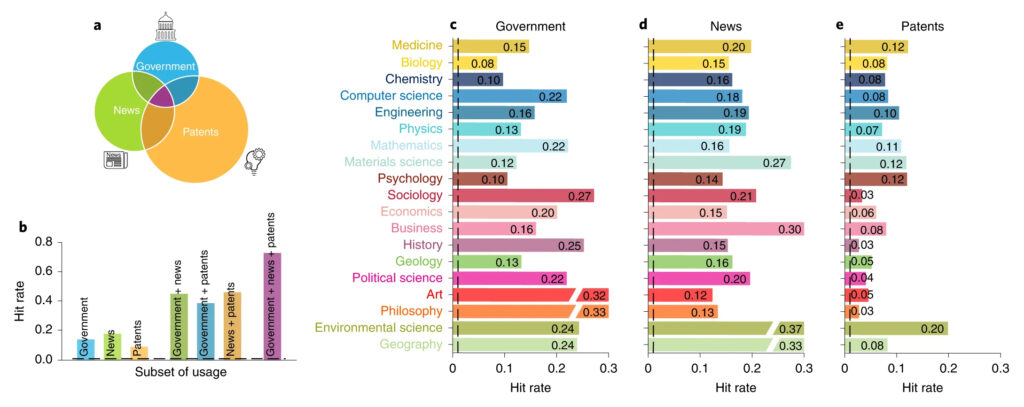Breaking Down Barriers – Rethinking assumptions on research and impact

New research by a team of scientists at Northwestern University in the US and tech firm Microsoft have recently published an article in Nature Human Behaviour that seeks to understand the relationship between public investment in science and the varied public use of science to see if there is any alignment between funding and utility.
One of the assumptions that underpinned the need for such evaluations was that there was a disconnect. A disconnect between academics in their proverbial ivory towers and the ‘real world’ who might benefit from scientific endeavour. Talk of a ‘gap’ or ‘chasm’ between the two sides was common; attempts at bridging the apparent divide were legion, and doomed to failure.
At the very least, many people would assume there was little or any alignment given the preconceptions of ivory towers and wasted tax dollars on irrelevant research.
What has enabled this vexed question to now be answered is both the availability of huge databases on information and the capacity to cross-reference them. In total, five large datasets were used by the authors, two of them provided by Microsoft and two by Digital Science in the shape of Altmetric and Dimensions. The former provides the fulcrum as Altmetric tracks a range of online sources referencing scholarly content, collating this information in a way that enables reporting around online attention. The idea of the article is that if we can see what research has been invested in by funders and then map it to the research society has engaged with, we will see if there is any alignment between public funding and public use.
And the answer is an emphatic ‘yes’.
At the end of their results, the authors state:
“Although each research field differs substantially in its relative role and contribution in science and beyond, the combination of their impacts beyond science powerfully predicts funding, suggesting that, ultimately, what the public uses, what scientists use and what is funded are remarkably consistent.” – Yin et al, 2022
After looking across all the main subject areas in science, social science and humanities, factors differed in terms of the public they exhibited with government, news and people in general. However, high-impact science tends to be consumed more by the public, and scientific funding for a field of research or discipline appears to be closely aligned with the totality of its public utility.

The implications of this research are clear: for researchers, administrators, government organizations and funders, the data shows that public use of research dovetails where funding has been placed, which in turn proves to funding providers there has been return on their original investment. For those in the academic or funding fields, the study really highlights where Altmetric comes into its own, by identifying online attention metrics that demonstrate real public engagement.
The article is the realization of the Holy Grail for its authors and many others in showing how public funding and public use of research are aligned. The Holy Grail for funders and academic institutions has always been something similar, and with Altmetric this study shows that those aspirations are now possible.
The name Altmetric is, of course, a portmanteau word that combines the separate terms ‘alternative’ and ‘metrics’. The brand name – and wider field of study of altmetrics – were in part conceived as a new way to understand the influence research has outside the narrow confines of citation counting, which had dominated the conversation around measuring research outcomes for decades. With altmetrics, technology now gives visibility to what research is gaining traction in the wider world.
To find out how Altmetric can support your research get in touch today.
Reference
Yin, Y., Dong, Y., Wang, K. et al. Public use and public funding of science. Nat Hum Behav (2022). https://doi.org/10.1038/s41562-022-01397-5
